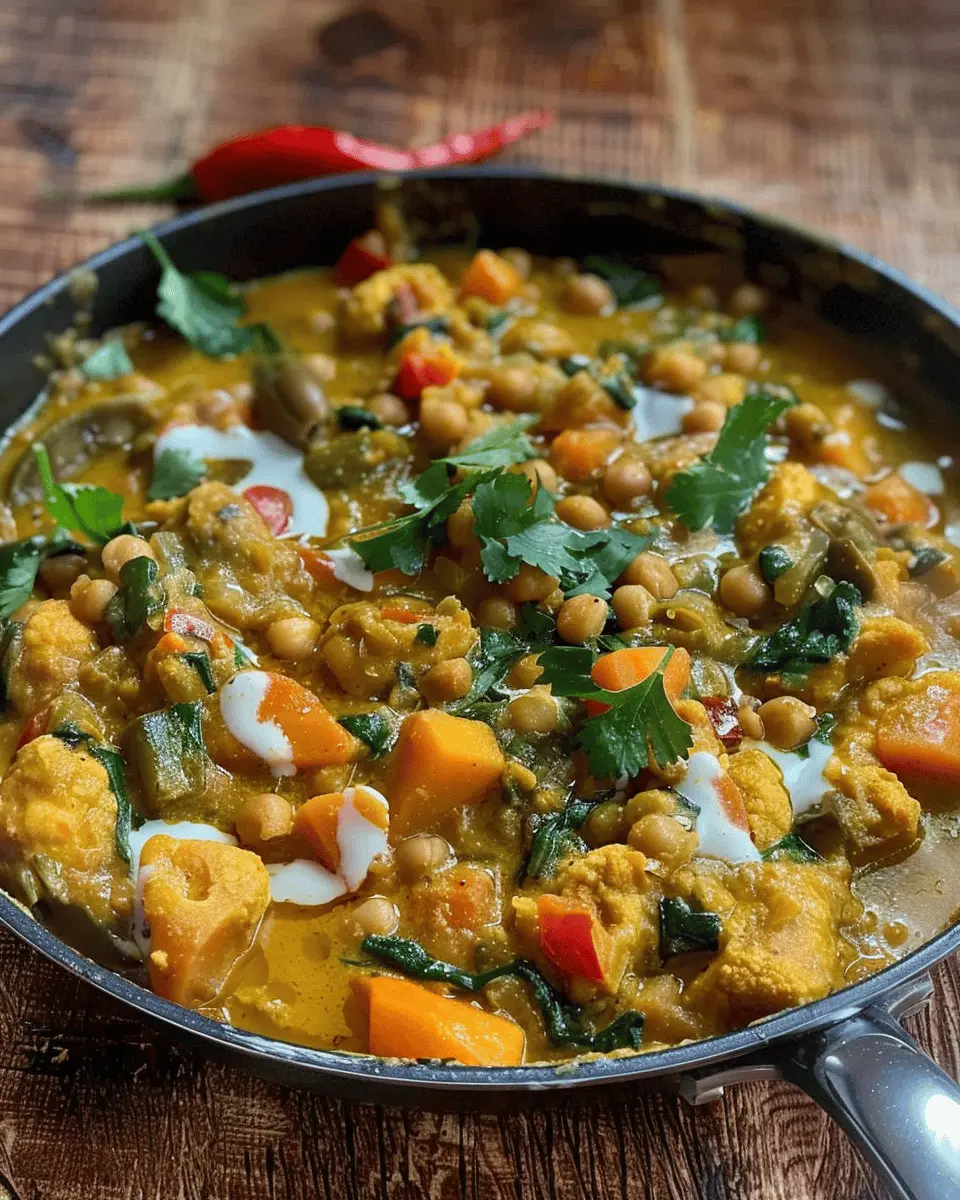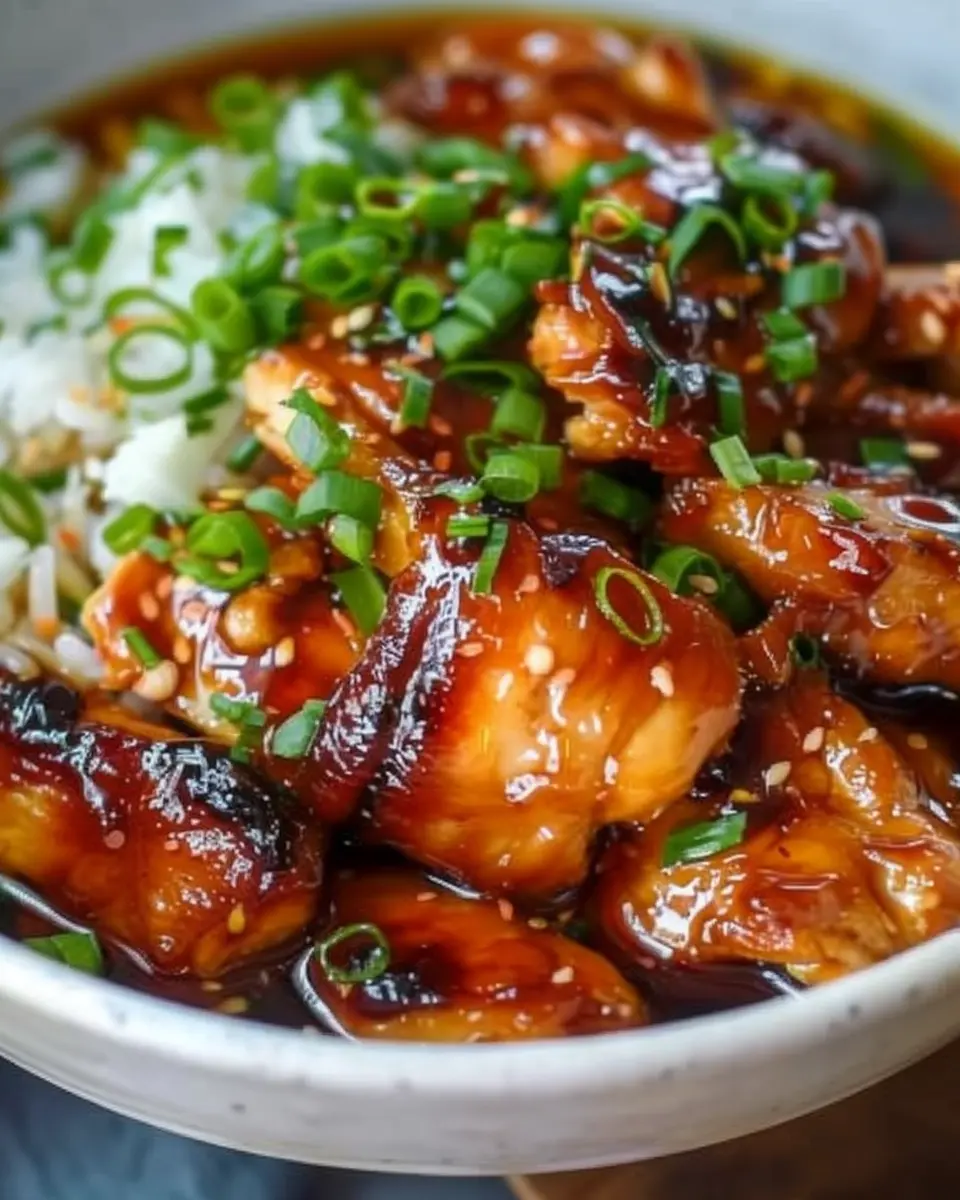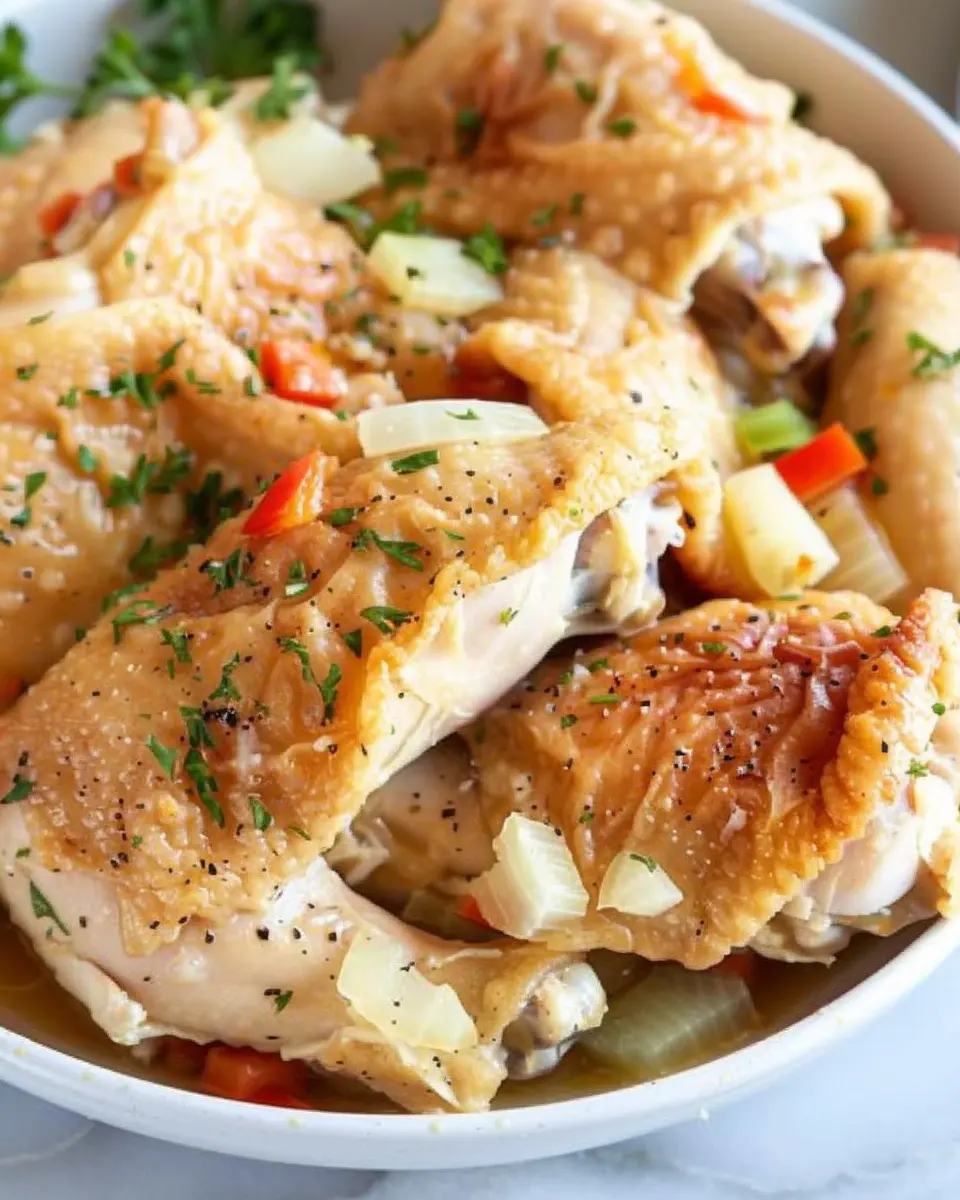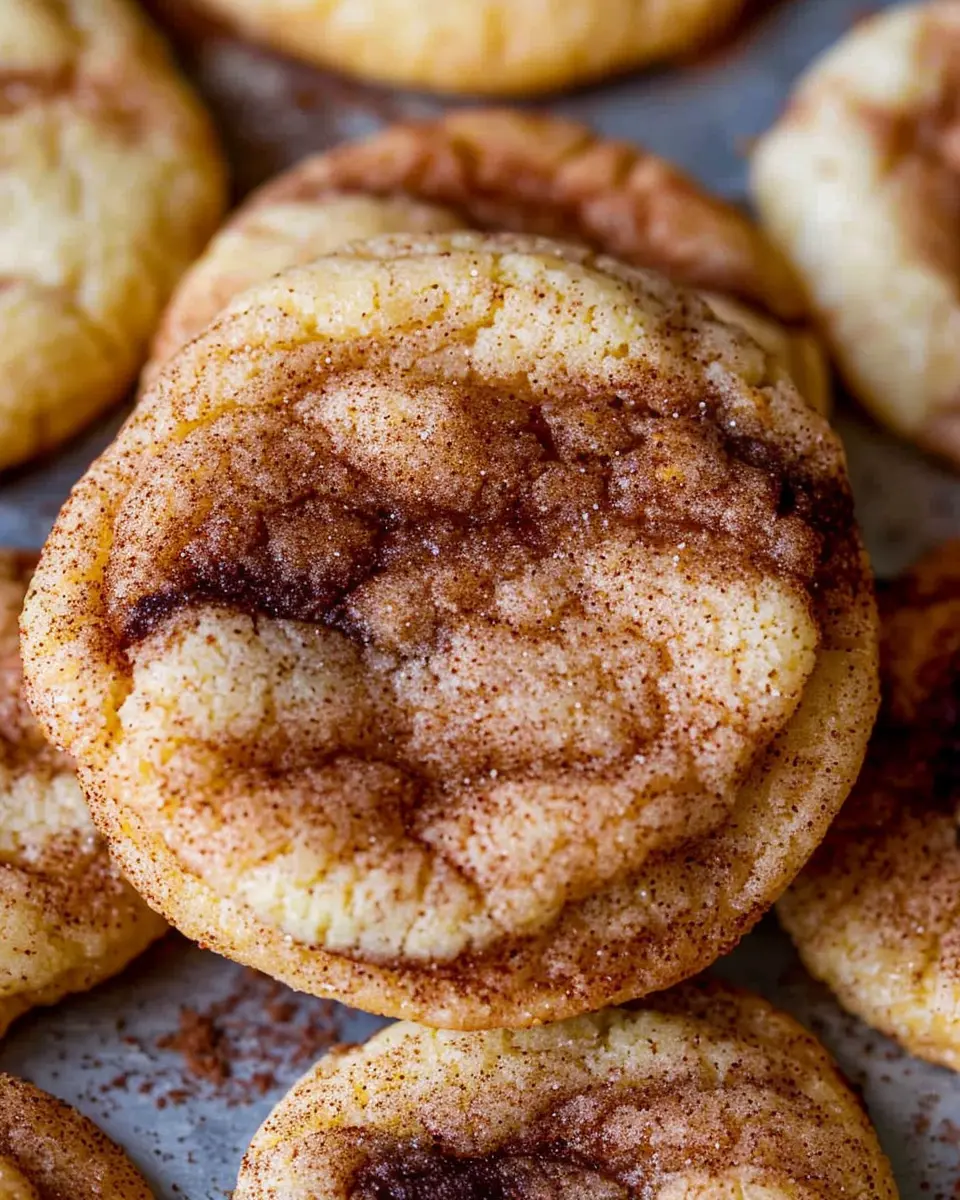Introduction to Caribbean Vegetable Curry
Caribbean food is a colorful tapestry of flavors, culture, and tradition. Among its amazing offerings, Caribbean Vegetable Curry stands out as a vibrant dish with a unique twist. This delightful recipe showcases a harmonious blend of seasonal vegetables infused with aromatic spices, all draped in a creamy coconut sauce that will transport your taste buds straight to the tropics.
What makes Caribbean Vegetable Curry so enticing?
First and foremost, it’s the spice. Caribbean cuisine is renowned for its bold, lively flavors, and a good vegetable curry is no exception. The combination of spices like allspice, thyme, and cumin creates a symphony of taste that dances on your palate. According to a study by the Culinary Institute of America, the right spices not only enhance flavor but can also increase the nutritional value of meals, making them more beneficial for your health.
What makes this dish truly appealing is its versatility. You can customize it based on the vegetables you have on hand or your personal preferences. Common choices include bell peppers, carrots, and sweet potatoes, but feel free to experiment and add your favorites. The beauty of a Caribbean Vegetable Curry is that it can easily accommodate whatever produce is in season or in your fridge. It’s a great way to reduce waste and enjoy a hearty meal at the same time.
Finally, let’s talk about the coconut milk. It’s the creamy element that ties everything together, providing a rich texture while balancing out the spices. Not only does it add flavor, but coconut milk is also known for its medium-chain fatty acids that can help with weight management and energy levels. If you’re looking for a comforting meal that fills you up without weighing you down, this dish is your go-to.
By trying out this Caribbean Vegetable Curry, you’re not only enjoying a meal steeped in rich Caribbean heritage but also embracing a wholesome way to nourish your body. Ready to spice up your dinner routine? Let’s dive into this tropical delight!
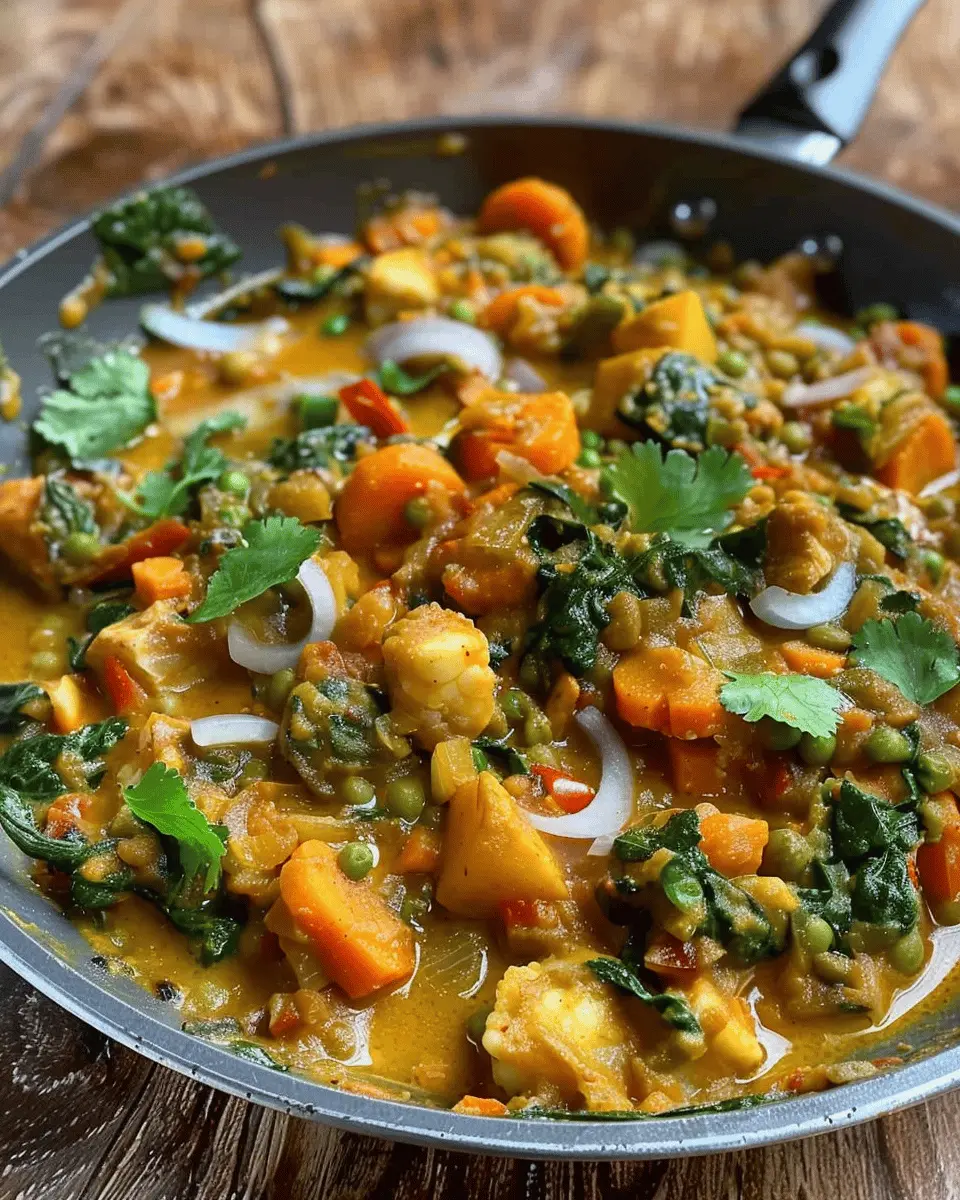
Ingredients for Caribbean Vegetable Curry
Creating a delicious Caribbean Vegetable Curry starts with the right ingredients. Here’s everything you need to whip up this vibrant dish that shines in both flavor and nutrition.
Fresh Vegetables and Herbs
Begin with a medley of fresh vegetables to ensure maximum flavor and texture. Some favorites include:
- Bell peppers (red, green, or yellow)
- Zucchini
- Carrots
- Spinach or kale
- Sweet potatoes
To elevate your dish, add fresh herbs like cilantro or parsley! Their brightness complements the spices beautifully.
Essential Spices
The heart of any good Caribbean Vegetable Curry lies in its spices. Stock up on:
- Curry powder
- Turmeric
- Cumin
- Allspice
- Fresh ginger and garlic
These spices not only enhance the flavor but also provide numerous health benefits. For more info on their nutritional value, check out resources like Healthline.
Alternative Protein Options
Although this curry is packed with veggies, you might want to amp up the protein. Some popular alternatives are:
- Tofu: A great plant-based option that absorbs flavors well.
- Turkey Bacon: For a smoky twist, chop it up and mix it in.
- Chicken Ham: Adds a savory depth without being overpowering.
Mix and match according to your preference, and enjoy a hearty meal that fits your lifestyle!
Preparing Caribbean Vegetable Curry
Creating a delightful Caribbean Vegetable Curry is not only a way to enjoy a hearty meal but also an opportunity to bring the vibrant flavors of the Caribbean into your home. This dish is rich in nutrients, bursting with colors, and perfect for any occasion. Now, let’s dive into the steps to make this delectable curry!
Gather Your Ingredients
Before you start cooking, it’s essential to have everything ready. Here’s what you’ll need for an authentic Caribbean Vegetable Curry:
- Vegetables: Start with a mix of your favorites such as bell peppers, carrots, zucchini, and sweet potatoes.
- Aromatics: Fresh garlic, ginger, and onions are key for that aromatic base.
- Spices: Curry powder, turmeric, cumin, and coriander will add depth to your dish.
- Coconut milk: For creaminess and to balance the spices.
- Olive oil: This will be your cooking fat. You can also opt for coconut oil for an extra tropical feel.
- Vegetable broth: Helps to infuse more flavor into the curry.
- Salt and pepper: Classic seasonings that enhance every dish.
Feel free to customize the veggies according to what’s in season or what you have in your pantry. If you’re looking for sources on the health benefits of these ingredients, check out Healthline for more insights.
Prep the Vegetables
Once you have everything gathered, it’s time for some prep work. Here’s how to get your vegetables ready:
- Wash and peel your vegetables as needed.
- Dice or chop the bell peppers, carrots, and zucchini into bite-sized pieces to ensure even cooking.
- Slice the sweet potatoes into thin rounds or cubes for quicker cooking.
- Mince the garlic and ginger finely; this will release their flavors more effectively.
Having your vegetables prepped not only makes the cooking process smoother but is also a great way to get yourself into the cooking vibe!
Sauté the Aromatics
In a large pot, heat some olive oil over medium heat. Add your chopped onions first and sauté until they become translucent. This usually takes about 3-5 minutes. Next, incorporate the minced garlic and ginger, cooking for just about a minute until fragrant. This step is crucial because the aromas create a wonderful base for your Caribbean Vegetable Curry.
Add the Vegetables and Spices
Now, it’s time to bring everything together with the veggies and spices. Start by adding the chopped vegetables you prepped earlier into the pot. Stir them well to coat in the aromatic oil. After about 5 minutes, sprinkle in the spices: curry powder, turmeric, cumin, and coriander. Toss everything well, letting the spices toast slightly. This will enhance their flavors and make your curry more aromatic.
Simmer the Curry
Once your spices are fragrant, pour in the vegetable broth. Bring the mixture to a gentle simmer – you want to cook it low and slow for the best flavor. Cover the pot and let it simmer for about 15-20 minutes, or until the vegetables are tender. Feel free to sneak a taste; you might want to adjust the seasoning with a pinch of salt or pepper if necessary.
Finish with Coconut Milk
The final step is to stir in the coconut milk. This adds creaminess and rounds out the spices beautifully! Cook for an additional 5 minutes, stirring occasionally. The coconut milk not only enriches the curry but also provides a delightful contrast to the spices.
Once you’ve finished, your Caribbean Vegetable Curry is ready to be served! Pair it with rice or warm naan for a perfect meal. Whether you’re preparing dinner for friends or just treating yourself, this dish is sure to impress. Enjoy!
Looking for more Caribbean flavors? Check out this amazing resource on Caribbean cooking from BBC Good Food for inspiration!
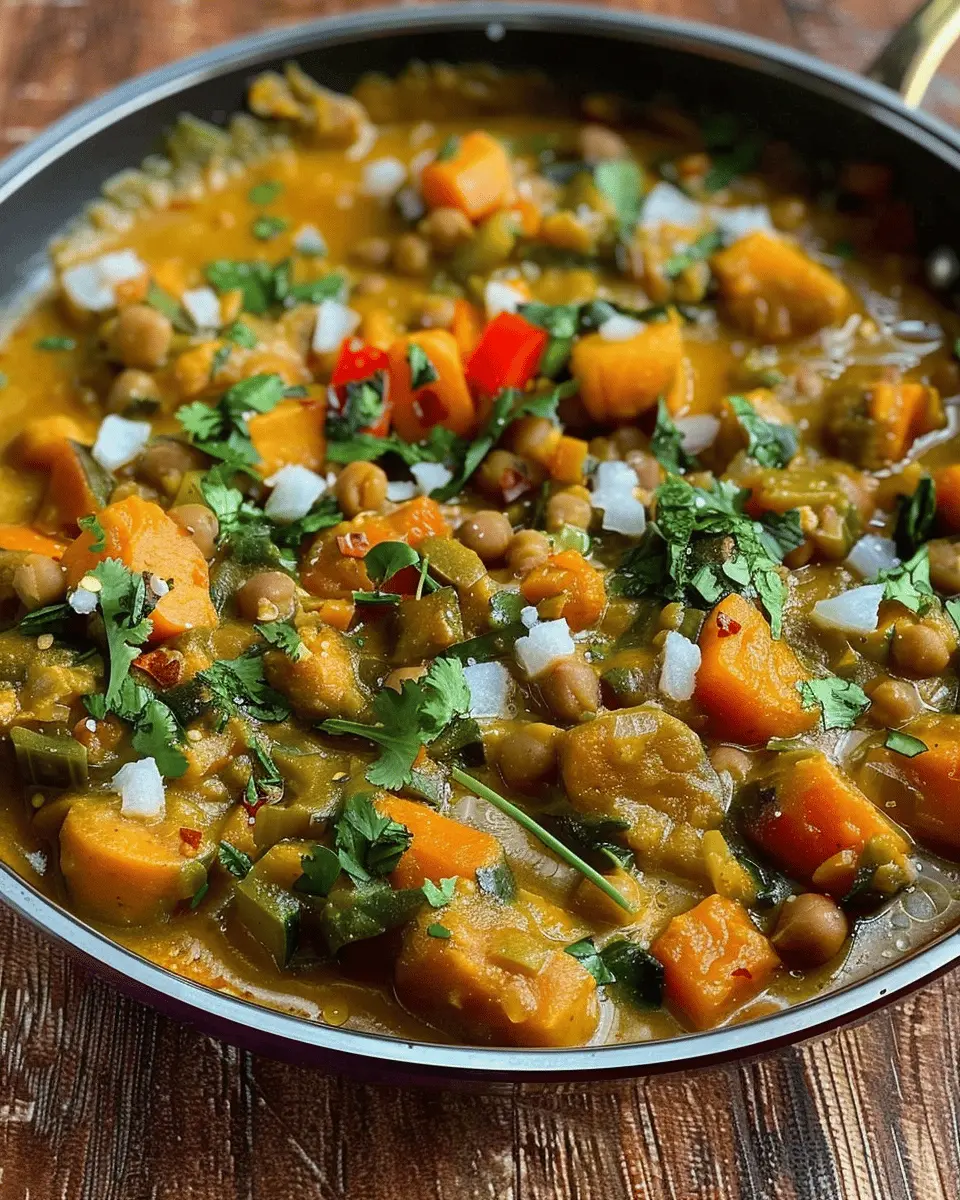
Variations on Caribbean Vegetable Curry
Adding a Protein Boost
If you’re looking to turn your Caribbean Vegetable Curry into a hearty meal, consider adding a protein boost. Chickpeas and lentils are excellent vegetarian options that complement the spices beautifully. If you’re not vegetarian, turkey bacon or chicken ham can add a delightful twist while still keeping that tropical vibe. A great tip? Pre-cook your protein to ensure it melds seamlessly with the curry’s rich flavors.
Making it Spicy
For those who crave a spicy kick, you can amp up the heat by incorporating fresh scotch bonnet peppers or red chili flakes. Start with a small amount and gradually add more—it’s always easier to intensify the spiciness than to tone it down! If you prefer a milder approach, substitute with sweet pepper varieties for flavor without the burn. Enhance your dish with a splash of coconut milk; not only does it enrich the texture, but it also balances out the heat beautifully.
Exploring Different Vegetables
Don’t hesitate to get creative! Beyond the usual suspects like carrots and bell peppers, explore using:
- Sweet potatoes for a creamier texture
- Zucchini for a fresh crunch
- Eggplant for a savory depth
The beauty of Caribbean Vegetable Curry lies in its versatility—mix and match based on what’s in season or what you have at home. Remember, each vegetable brings its unique flair, so experiment and discover your new favorite combination!
You can find more inspiration and tips on enhancing your curry by checking out culinary blogs like on the Food Network or Serious Eats.
Cooking Tips and Notes for Caribbean Vegetable Curry
How to Make It Gluten-Free
Making your Caribbean Vegetable Curry gluten-free is a breeze! All you need to do is ensure that the products you use, like vegetable broth or curry paste, are labeled gluten-free. Many brands offer these options, allowing you to enjoy the delicious flavors without worry. Moreover, feel free to swap out regular soy sauce with tamari to keep it gluten-free! By taking these simple adjustments, you’ll create a dish that everyone can enjoy, regardless of dietary restrictions.
Best Practices for Storing Leftovers
Let’s be honest, a flavorful Caribbean Vegetable Curry only gets better the next day! To store your leftovers:
- Allow the curry to cool completely before placing it in an airtight container.
- Refrigerate it for up to 3-4 days.
- For longer storage, freeze in portions, and it should last up to 3 months.
When reheating, gently bring it back up to temperature on the stove to maintain its rich flavors. Next time you’re pressed for time, you’ll thank yourself for having a delicious meal ready to go!
If you’re looking for additional tips, check out the Food Safety and Inspection Service for more guidance on food storage and safety.

Serving suggestions for Caribbean Vegetable Curry
Pairing with rice or quinoa
One of the simplest yet most delicious ways to enjoy Caribbean Vegetable Curry is by serving it over a bed of fluffy rice or quinoa. Jasmine or basmati rice complements the rich flavors beautifully, absorbing the vibrant curry sauce. If you want to switch things up, try using quinoa—it adds a delightful nuttiness and extra protein that’s perfect for a wholesome meal. For a fantastic flavor twist, consider coconut rice, which enhances the tropical essence of the curry.
Garnishes and accompaniments
Don’t underestimate the power of garnishes! Chopped fresh cilantro or parsley can elevate your dish, adding freshness and color. A squeeze of lime juice will brighten the flavors, making every bite pop. For added texture, sprinkle some toasted coconut flakes or serve with crispy plantain chips.
Looking for a side? A tangy cabbage slaw works wonderfully alongside your Caribbean Vegetable Curry, providing a satisfying crunch and a touch of acidity. Check out resources like The Spruce Eats for more inspiration on sides and garnishes to round out your meal!
Time details for Caribbean Vegetable Curry
Preparation time
Getting ready to cook your Caribbean Vegetable Curry is a breeze! Set aside about 15 minutes to chop up your favorite colorful veggies, such as bell peppers, carrots, and zucchini. This part is all about enjoying the vibrant colors and fresh scents.
Cooking time
Once your ingredients are prepped, the cooking process will take around 25 to 30 minutes. You’ll sauté the vegetables with aromatic spices, allowing the flavors to meld beautifully. You can adjust the timings slightly based on your stove and how tender you like your veggies.
Total time
Overall, you’re looking at approximately 45 minutes from start to finish for this delightful dish. It’s perfect for weeknight dinners or meal prep for lunches. With just a little bit of time, you’ll have a hearty, flavorful vegetarian option that’s sure to impress!
For some inspiration and tips, you might want to check out this resource on veggie nutrition to learn more about the health benefits of your colorful ingredients.
Nutritional Information for Caribbean Vegetable Curry
Calories
A serving of Caribbean Vegetable Curry typically contains around 250 to 300 calories, depending on the specific ingredients used and their quantities. This makes it a great option for a hearty meal without going overboard on caloric intake. Plus, you can easily adjust the serving size to fit your dietary needs.
Fiber
One of the standout features of Caribbean Vegetable Curry is its fiber content. With a generous mix of vegetables like bell peppers, carrots, and chickpeas, you can expect about 8 grams of fiber per serving. Fiber is essential for digestive health and can help keep you feeling full longer—perfect for anyone juggling a busy lifestyle!
Vitamins and Minerals
This vibrant dish is packed with vitamins and minerals, making it a nutritious choice that offers numerous health benefits. Here’s a quick rundown of what you can expect:
- Vitamin A: Essential for good vision and immune function, found abundantly in carrots and sweet potatoes.
- Vitamin C: Crucial for skin health, and largely present in bell peppers and tomatoes.
- Potassium: Beneficial for heart health, with great sources in beans and leafy greens.
- Iron: Important for oxygen transport in the blood, provided by legumes and spinach.
Incorporating Caribbean Vegetable Curry into your weekly meal prep can significantly boost your nutrient intake. If you’re eager to learn more about the benefits of these nutrients, sites like Healthline offer excellent insights. Enjoy your culinary adventure while nourishing your body!
FAQs about Caribbean Vegetable Curry
Can I use frozen vegetables?
Absolutely! In fact, using frozen vegetables can save you a lot of prep time. Just remember that the cooking time might be slightly shorter since they’re typically blanched before freezing. When using frozen veggies for your Caribbean Vegetable Curry, make sure to add them towards the end of the cooking process to keep that vibrant color and crunch. If you want to know more about the best types of frozen vegetables, check out this helpful guide from the USDA.
How do I make it less spicy?
If you (like many of us) prefer a milder kick, there are several tricks you can employ. Start by reducing the amount of spicy ingredients like chili peppers or cayenne. You can also balance out the heat with coconut milk, which wonderfully complements the flavors of the dish. Additionally, incorporating more vegetables like bell peppers and zucchini will not only reduce the spice level but enhance the nutritional value as well. Want more tips on adjustable spice levels? Check out this great post by Chowhound.
What can I serve with Caribbean Vegetable Curry?
Pairing your Caribbean Vegetable Curry with the right sides can elevate your meal. Here are some delicious options:
- Steamed rice or quinoa: These grains absorb the flavors beautifully.
- Roti or naan: Perfect for sopping up that creamy sauce.
- A fresh salad: Bright greens and citrus vinaigrette can add a nice contrast to the spices.
Feel free to experiment with what you have on hand, and don’t hesitate to mix and match based on your taste preferences. Happy cooking!
Conclusion on Caribbean Vegetable Curry
Embracing homemade goodness in your routine
Incorporating Caribbean Vegetable Curry into your weekly meal prep is a delightful way to embrace homemade goodness. Not only is this dish vibrant and packed with nutrients, but it also fills your kitchen with incredible aromas that will elevate your cooking experience. Balancing flavorful spices and seasonal vegetables makes it a nutritious choice that you’ll look forward to enjoying.
Why not explore the versatility of this dish? You can customize it with your favorite veggies or even switch up the curry paste for a different flavor profile. If you’re looking for more cooking inspiration, consider checking out BBC Good Food for a trove of ideas. Enjoy this culinary adventure, and happy cooking!
Print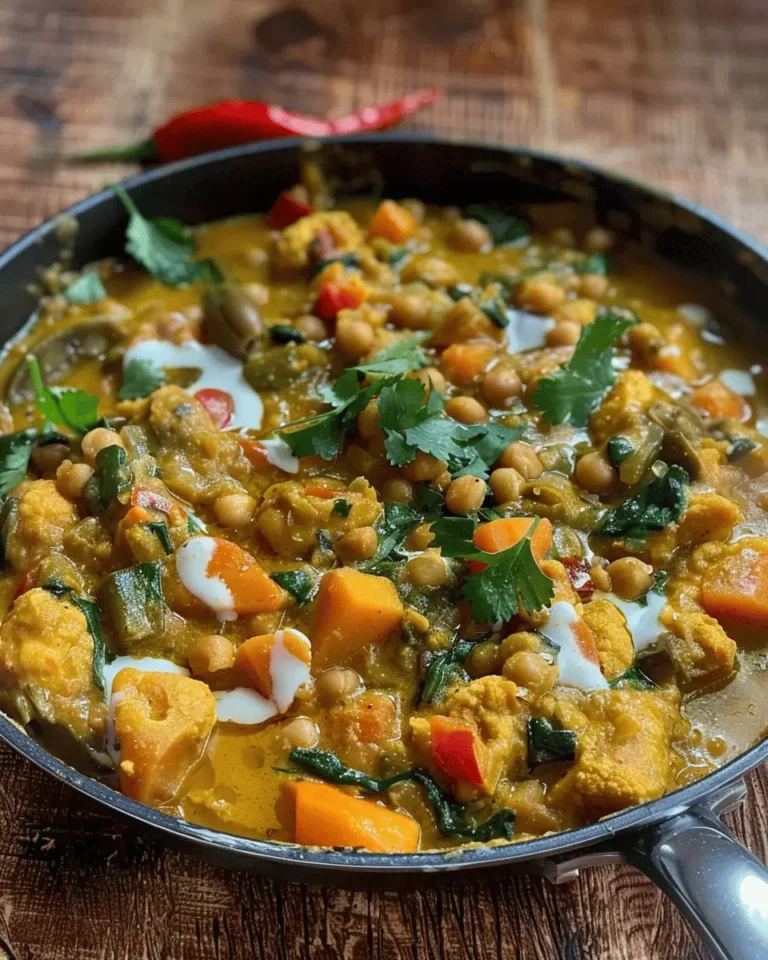
Caribbean Vegetable Curry: Easy and Flavorful Homemade Delight
A delicious and aromatic curry made with fresh vegetables and spices, inspired by vibrant Caribbean flavors.
- Total Time: 35 minutes
- Yield: 4 servings 1x
Ingredients
- 1 tablespoon olive oil
- 1 onion, chopped
- 2 cloves garlic, minced
- 1 bell pepper, chopped
- 1 zucchini, diced
- 1 carrot, sliced
- 1 can (15 ounces) coconut milk
- 2 tablespoons curry powder
- 1 teaspoon salt
- 1/2 teaspoon black pepper
- 2 cups spinach
- 1 lime, juiced
Instructions
- Heat olive oil in a large pot over medium heat.
- Add onions and garlic, cooking until softened.
- Stir in bell pepper, zucchini, and carrot, sautéing for 5 minutes.
- Add coconut milk, curry powder, salt, and pepper; bring to a simmer.
- Stir in spinach and cook until wilted.
- Remove from heat and stir in lime juice before serving.
Notes
- This curry can be customized with your favorite vegetables.
- Serve with rice or quinoa for a complete meal.
- Prep Time: 15 minutes
- Cook Time: 20 minutes
- Category: Main Course
- Method: Stovetop
- Cuisine: Caribbean
- Diet: Vegetarian
Nutrition
- Serving Size: 1 cup
- Calories: 300
- Sugar: 5g
- Sodium: 400mg
- Fat: 20g
- Saturated Fat: 10g
- Unsaturated Fat: 10g
- Trans Fat: 0g
- Carbohydrates: 30g
- Fiber: 5g
- Protein: 6g
- Cholesterol: 0mg
Keywords: Caribbean Vegetable Curry, vegetarian curry, easy curry recipe

